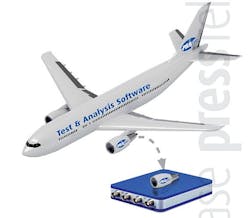Data bus market to reach $8.55 billion by 2020 as aerospace system complexity grows
DALLAS, 10 Feb. 2015. The global market for data bus hardware – a communications channel for transferring data between components and devices – is expected to reach $8.55 billion by 2020, growing at a compound annual growth rate (CAGR) of 8.30 percent, according to a new market research report published by MarketsandMarkets.
The design of the bus architecture encompasses several tradeoffs, such as clocking, transfer size, data width, and more, a spokesperson explains. In order for the communication to flow among the shared devices, a protocol needs to be established. Data buses are employed in various applications in the commercial aviation, military, and automotive sectors.
Analysts credit growth in the data bus market to the increasing use of AFDX, MIL-STD 1553, and the CAN bus. An increasing number of embedded electronic components are being added to vehicles in an effort to meet rising consumer demand for product features, according to the report. The complexity of each embedded component and subsystem also is rising exponentially along with the onset of time, the report continues. “To ease avionics industry cohesion, proprietary specially-defined standardized technologies are developed and used to meet deterministic applications. For instance, the MIL-STD-1553 has been implemented in military avionics and weapons control applications. Likewise, CAN bus, and IEEE-1394 are intended to meet the requirements of control and manufacturing applications.”
The analysts also indicate a “bullish trend toward the ARINC 664/AFDX, MIL-STD 1553, and CAN protocols adopted by market leaders. The data bus systems are expected to witness a remarkable growth during the forecast period.
“From a defense perspective,” they continue, “North America is expected to witness a slight decline in the market share during the forecast period, due to defense budget cuts, compared to other regions. China, India, Brazil, Japan, Germany, and South Africa are identified as emerging economies which are expected to witness an upsurge in demand of data bus systems. Blue Ocean strategies in the commercial aviation, defense, and the automotive sector will help the market grow at a rapid pace.
“The APAC countries will focus on growth, aim to create an uncontested market space, and direct their region's economies on a higher trajectory for the long run. Along with the organic and inorganic growth strategies being adopted, the use of FlexRay protocols is also expected to fuel the market by 2020. The ongoing growth of economies, especially in Asia, is expected to present aerospace & defense companies, along with automotive industries with significant opportunities in this market.The data bus market research report examines the global data bus market by protocol (MIL-STD, AFDX, ARINC 429/629, CAN, TTP), by application (military, commercial aviation, automotive), by component (micro couplers, cables, connectors, accessories), and by geography.
For more, visit: http://www.marketsandmarkets.com/Market-Reports/data-bus-market-136145580.html
Key players profiled in the data bus market report include: TE Connectivity, Rockwell Collins, Fairchild Semiconductor International, Fujikura Ltd, Data Device Corporation, Ballard Technology, Amphenol International, Corning, Optical Cable Corporation, Huber + Suhner, Molex, Belkin International, Fujikura, Optical Cable Corporation, Nexans Hellas SA, and Arinc Inc., among others.
“In a nutshell, the Data Bus Market has enormous potential for technological advancements and is expected to grow at a steady growth rate during the forecast period,” concludes a spokesperson.


